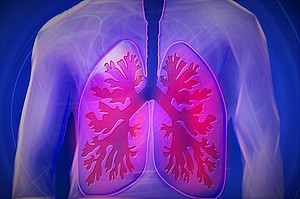LungMicrobiota

As part of the LungMicrobiota Project, LHT research scientists analyze how the microbes in the lungs as a whole (the lung microbiome) react to outer influences such as smoking. This is designed to form the basis for personalized treatment strategies of chronic respiratory diseases.
___________________
The so-called lung epithelium – the epithelium on the surface of the lungs – is in direct contact with all other influential factors that enter the lungs through the air. The surface of the lungs is not sterile: A special lung microbiome forms the interface between the lung epithelium and the air of the surrounding environment and thus fulfills an important function similar to the bacterial flora of the skin.
Changes in the special flora of the lungs – according to the hypothesis in the LungMicrobiota Project – could play a crucial role in the development of respiratory diseases such as COPD. The research scientists in this project are, therefore, testing how environmental stress factors change the structure and function of microbial communities in the lungs and how these changes affect the functionality of the lung epithelium.
One well-known environmental stress factor is cigarette smoke, which is simultaneously the main cause of chronic, noninfectious respiratory diseases. In a multidisciplinary approach, the structure and function of the lung microbiota of smokers, nonsmokers, and participants in a tobacco smoking withdrawal program are analyzed and complemented by a mouse model for active smoking.